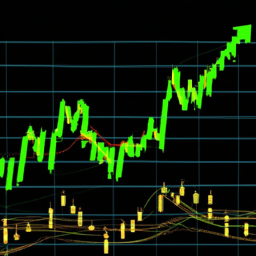
Introduction
When it comes to analyzing financial data or predicting future trends, moving averages play a vital role. Moving averages are widely used in technical analysis to identify patterns, trends, and potential reversals in stock prices, currency exchange rates, and other financial indicators. In this article, we will explore the concept of moving averages, their types, and how they can be effectively used in data analysis.
What are Moving Averages?
Moving averages are statistical calculations used to analyze data points over a specific period of time. They smooth out fluctuations and noise in the data, making it easier to identify trends and patterns. Moving averages are calculated by taking the average of a set of data points within a defined time frame and updating it as new data becomes available.
Types of Moving Averages
There are several types of moving averages commonly used in financial analysis:
- Simple Moving Average (SMA): SMA is the most basic form of moving average. It calculates the average of a set of data points over a specific time period. Each data point is given equal weightage in the calculation.
- Exponential Moving Average (EMA): EMA gives more weightage to recent data points, making it more responsive to price changes. It is calculated using a weighted average formula that assigns exponentially decreasing weights to older data points.
- Weighted Moving Average (WMA): WMA assigns different weights to data points within the time period, giving more importance to recent data. It is calculated by multiplying each data point by a corresponding weight and then summing them up.
Using Moving Averages in Data Analysis
Moving averages can be used in various ways to analyze financial data. Here are a few common applications:
- Trend Identification: Moving averages help in identifying the direction of a trend. When the price is above the moving average, it indicates an uptrend, while a price below the moving average suggests a downtrend.
- Support and Resistance Levels: Moving averages can act as support or resistance levels. If the price bounces off a moving average multiple times, it indicates a strong support or resistance level.
- Crossovers: Moving average crossovers occur when two moving averages of different time periods intersect. This is often considered a signal for potential trend reversals or entry/exit points.
- Price Smoothing: Moving averages smooth out price fluctuations, making it easier to identify long-term trends and filter out short-term noise.
Conclusion
Moving averages are powerful tools in financial analysis, providing valuable insights into trends, support/resistance levels, and potential reversals. By understanding the different types of moving averages and their applications, analysts and traders can make more informed decisions based on historical data. Whether you are a beginner or an experienced investor, incorporating moving averages into your analysis can greatly enhance your understanding of market dynamics and improve your trading strategies.